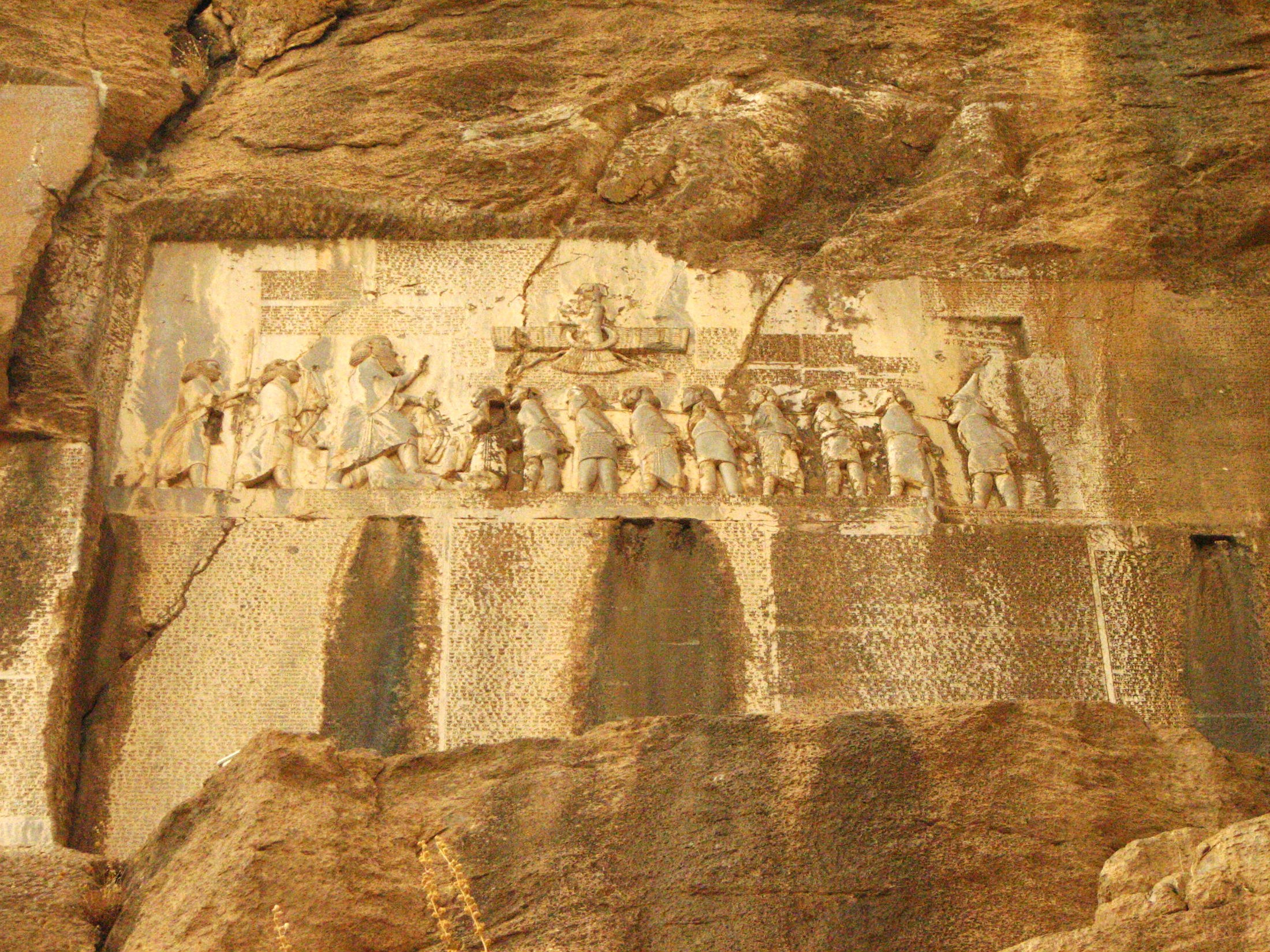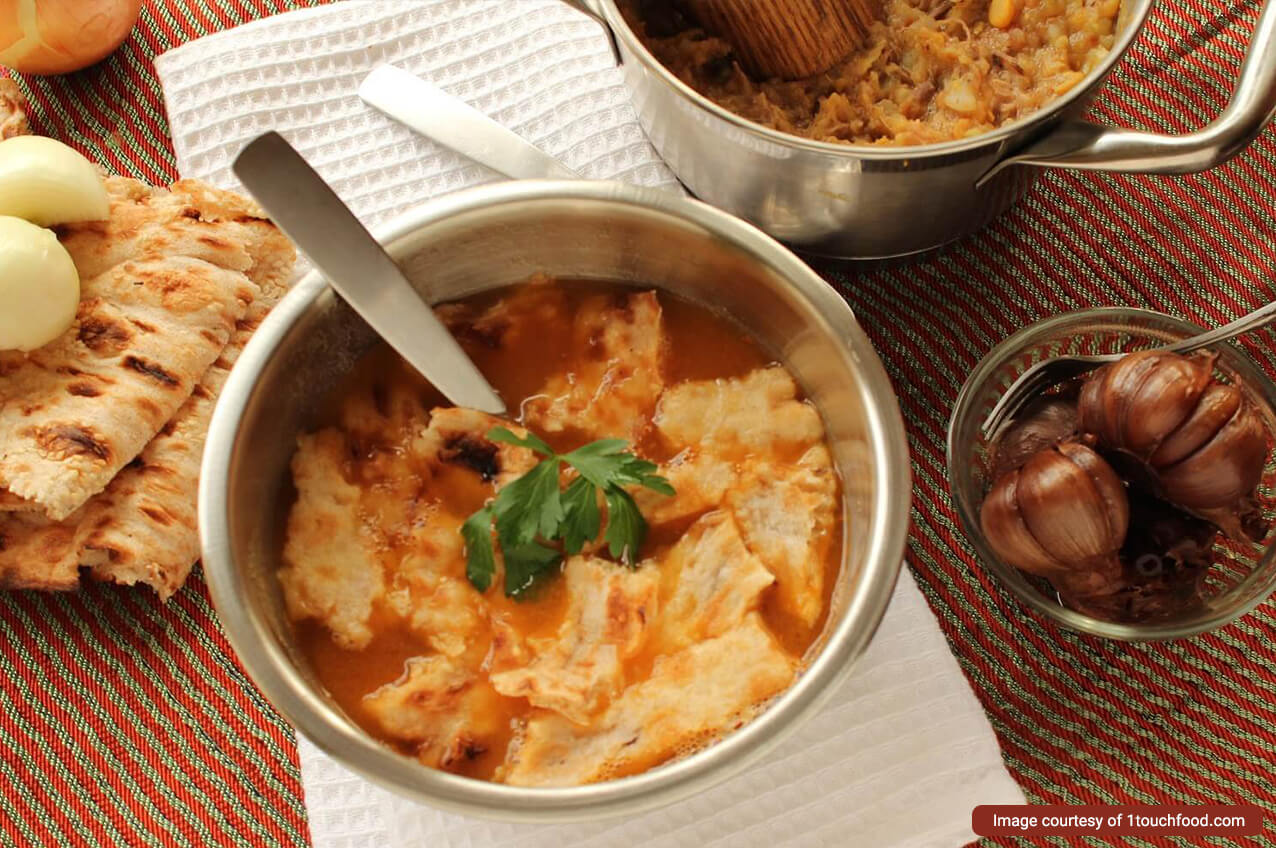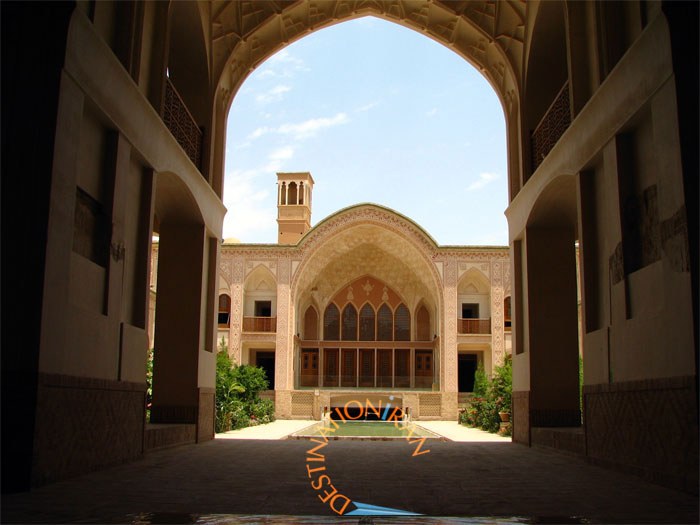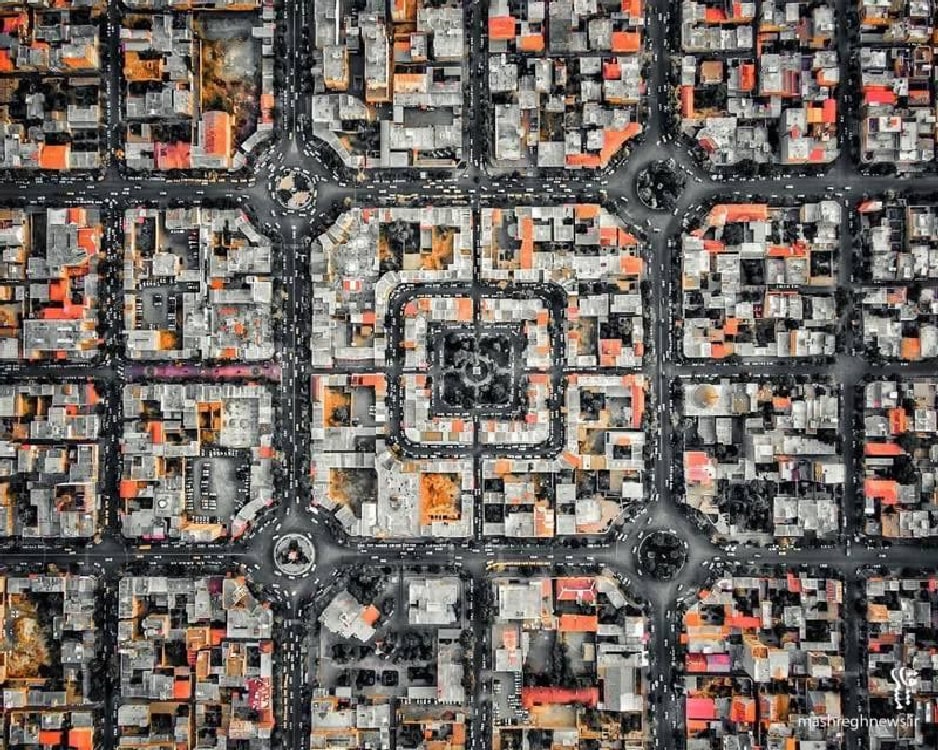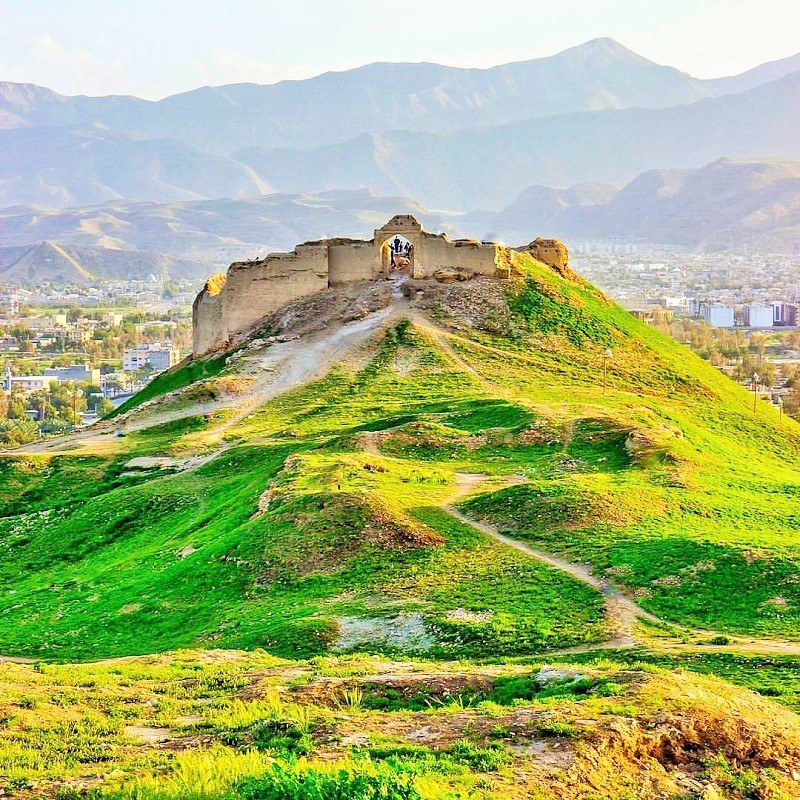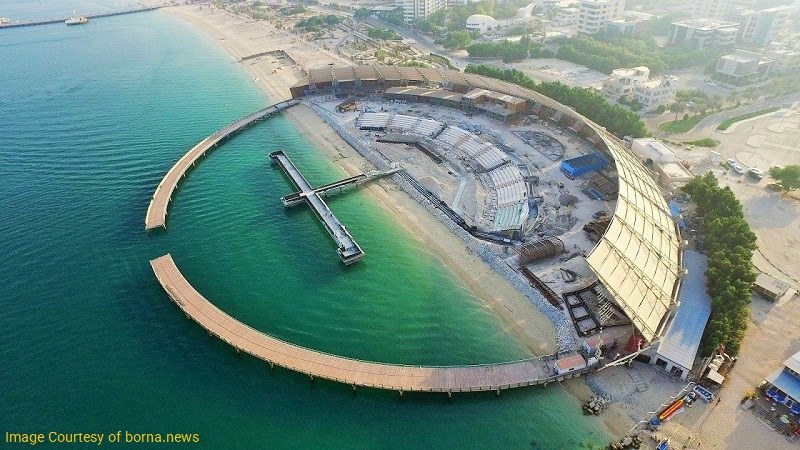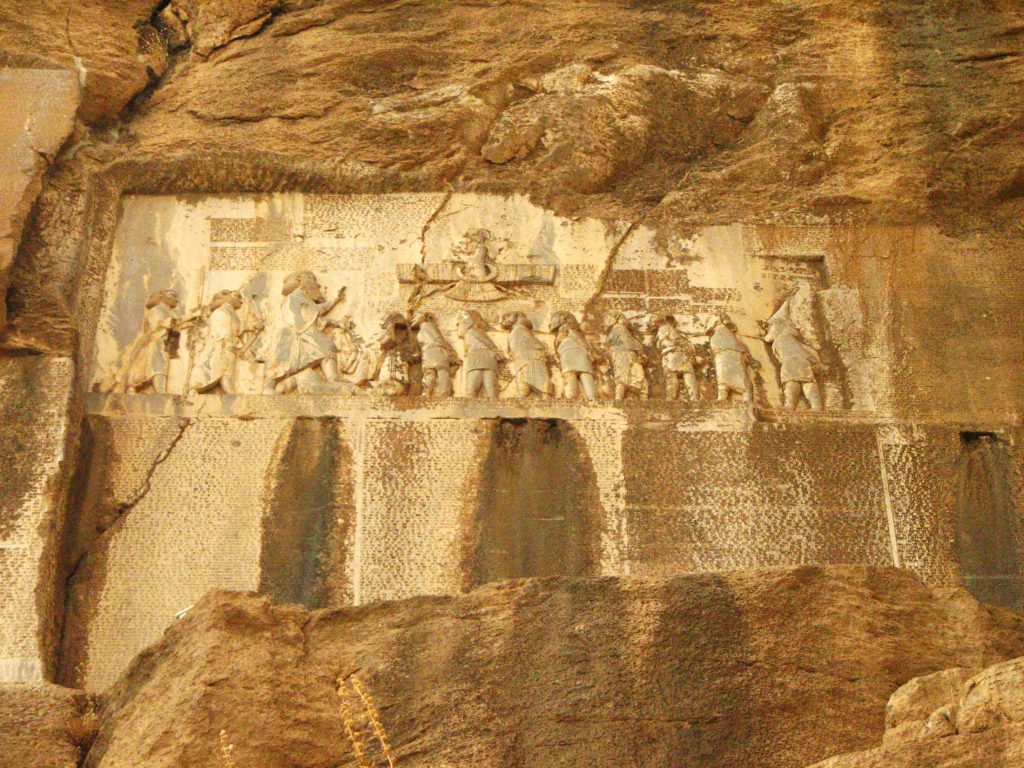
Introduction of Kermanshah
The city of Kermanshah is the capital of Kermanshah province, western Iran. It is the principal city in this region and has got plenty of tourist attractions to offer to Iranian and non-Iranian travelers.
One can visit several historic attractions inside and outside Kermanshah as well as many natural attractions outside this city.
Geography of Kermanshah
With an altitude of about 1200 m above sea level, it has a moderate and mountainous climate. The average annual temperature is 14.5⁰C and the average annual rainfall is 475 mm in Kermanshah.
Here are the different ways of traveling to Kermanshah:
- By car
The route from Tehran to Kermanshah is 500 km and takes around about 6 hours by car. It passes through Saveh, Hamedan, Asadabad, Kangavar and then reaches Kermanshah. During the travel through this route, you can also visit the historic city of Hamedan. The impressive Anahita Temple in Kangavar is also on the road from Tehran to Kermanshah.
The second route for this traveling from Tehran to Kermanshah passes through Qom, Arak, Malayer, and Nahavand cities and then reaches Kermanshah. This route also goes through beautiful countryside. However, it is a little longer than the first route, 575 km and approximately 7 hours.
It is possible to travel to Kermanshah by car or by passenger bus. There are buses leaving daily from South, Beyhaqi and West terminals of Tehran to Kermanshah.
- By airplane
There are weekly flights to Kermanshah from Tehran, Mashhad, Kish, Qeshm, Shiraz, Assaluyeh and Bandar Abbas. The flight from Mehrabad Airport of Tehran to Kermanshah takes about an hour.
- By train
There are passenger trains leaving from Kermanshah Railway Station to Tehran and Mashhad. It takes about 11 hours from Tehran to Kermanshah and 21 hours from Mashhad to Kermanshah by train.
Population & Economy of Kermanshah
According to the 2006 census, the population of this city was about 950000. The language mostly spoken in Kermanshah is Kurdish.
The average annual precipitation and relative humidity in this region are to the extent that mountain slopes and plains are mainly covered with woods and pastures, and in some areas, dry farming is applied.
Lying within the Zagros chain, and providing natural shelters and caves were the reasons which made Kermanshah a proper settlement for humans in Stone Age. Archaeological excavations prove that prehistoric people used to occupy this area. The discovered objects date back to at least 200000 years ago.
A major part of the city’s prosperity depends on agriculture. But there are also some other factors like food processing, constructional materials, and local handicrafts like kilim or carpet weaving, cotton-shoe making (Giveh), leather works, etc.
Kermanshah is a center of Iranian and Kurdish traditional music. It’s been the homeland of prominent figures in literature, art, history, science, and politics.
Major industrial installations in this city include sugar refinery factories, oil refinery, petrochemical complex, cement factory, and a citric acid plant which is the only one throughout the Middle East.
This city is also well-known because it’s related to a legendary Persian love story. The story narrates a tragic romance between Khosrow II (the last king of the Sassanid Empire), Shirin (an Armenian Princess), and Farhad (a stonemason who was in love with Shirin).
Kermanshah tourist attractions are certainly worth visiting. There are rich historical heritage sites as well as stunning natural attractions inviting all to explore the region.
History of Kermanshah
Kermanshah has been always the link between the Iranian plateau and Mesopotamia throughout its history during the pre-Islam era. In the fourth millennium BC, the region currently known as Kermanshah province was one of the most important centers of trade and commerce with Mesopotamia.
There have also been many conflicts and wars between these two nations. Therefore, this region used to be the center of various Iranian and Mesopotamian civilizations and governments for centuries.
During the Buyid period, some minor Kurdish dynasties set up uprisings in the areas around Kermanshah. It had a military and economic importance in the Seljuq period. The reason was its location at the intersection of a great highway linking the city to major trade areas inside and outside of the Iranian Plateau. And, it was one of the major cities as well as one of the dynastic capitals in the Sassanid period. This glorious city was also the summer resort for Sassanid kings.
During the post-Islam era, a lot of significant incidents occurred in Kermanshah as well. In 640 A.D., after the Arabs’ invasion of Iran, Kermanshah was occupied and destroyed completely by Arabs. The population decreased, and its residents moved to other cities. About a decade later, people rebuilt the city along the Qarasu River banks.
During the reign of Abbasid caliphs, it was an important city because of its strategic location. In 1220 A.D., after the Mongol invasion of Iran, Kermanshah was badly damaged again.
In the early Safavid period, due to Iran’s conflicts with Ottoman, ruling Kermanshah was a complicated situation. At times, Ottomans could defeat Iranians and rule over the city. But some other times, they were defeated by Iranians and left its ruling to Iran. But from the reign of Shah Safi, the sixth king of the Safavid dynasty, to the end of the Safavid period, the city was enjoying a period of peace and prosperity.
Military Importance of the City
Benefiting from artillery attributed to Nader Shah, the founder of the Afsharid dynasty, Kermanshah gained military significance. Such a condition made the city a battlefield between Nader Shah and Ottomans.
Because of its artillery, Kermanshah was the focus of attention after the death of Nader Shah. There were many conflicts over the takeover of the city among those who sought power, and it was Karim Khan Zand, the founder of Zand dynasty, who won.
In 1753 A.D., Karim Khan invaded Kermanshah, destroyed and evacuated it completely so that, for nearly 10 years, there was nothing called Kermanshah. Then, in 1762 A.D., the city was revived in the southwest of the former location, and Allahqoli Khan (from Zanganeh family, a local Kurdish tribe) ruled there as the governor.
Kermanshah enjoyed a short period of peace due to having Allahqoli Khan as its most powerful governor. But after the death of Karim Khan, he claimed the throne, and this led the city toward civil conflicts once again. Throughout the Zand period, Zanganeh family governed Kermanshah most of the time.
Beginning of the Prosperous Time
In the 19th century, Kermanshah experienced progress in terms of commercial and strategic significance. The city was flourishing. It also had political and social importance to the government.
The appointment of Mohammad Ali Mirza, the sixth king-to-be of the Qajar dynasty, as the governor of Kermanshah was one of the best things happened to the city. He started urban planning and caused the city to develop greatly. For instance, he constructed caravansaries and accommodations for merchants, and build a new fortress.
There were two major reasons which made Kermanshah a critical area for the Qajars. First, their relationship with Ottomans in Iraq. And second, making it secure for the pilgrims so that they could go to Iraq and visit the Shiite’s shrines there. Qajar kings managed to restore relative security in this region.
Kermanshah during the Contemporary Period
Kermanshah played an important role in the Constitutional Revolution in Iran. It was a movement from 1905-1911 for establishing a constitutional regime in which the people of this city were actively involved.
In the late World War I, Kermanshah was seized by Ottoman Forces. Also, during World War II, Great Britain forces seized the city and it remained occupied until the end of the war.
Kermanshah played a major role in the Islamic Revolution of Iran in 1979 as well. It was one of the resistance centers against the Pahlavi regime. It was among the cities of Iran which underwent a lot of damage during the eight-year war of Iran and Iraq (1980-1988).
Historic Attractions inside the City
Here’s the list of the most famous places in the city:
Kermanshah Old Bazaar
The main trade center of Kermanshah dating back to about 150 years ago. It’s one of the largest cover markets throughout the Middle East.
Tekiyeh of Moaven-ol Molk
The most well-known monument remaining from the Qajar period in this city. It’s been a place for holding mourning ceremonies for religious leaders.
Tekiyeh of Biglar Beigy
It’s one of the masterpieces of Iranian architecture, and a great tourist attraction dating back to the Qajar period.
Emad-o Dowleh Complex
It’s a magnificent manifestation of Iranian architecture dating back to Qajar period and consists of a mosque, a bazaar, and a caravansary.
Kermanshah Great Mosque
It’s one of the remarkable monuments dating back to the late Zand period.
Shafei Mosque
Built with the style of Turkish mosques, Shafei Mosque has long minarets. Its construction dates back to 1945. This mosque is for the Sunnis.
Dowlat Shah Mosque
This mosque dates back to the Qajar period. The mosque has a portal, a courtyard, and a Shabestan.
Khajeh Baruck House
A splendid monument which belonged to one of the Jewish merchants in Kermanshah. It’s dating back to the Qajar period.
Historic Attractions outside the City
Here’s a list of the most-known places outside Kermanshah:
Taq-e Bostan
It’s a set of Sassanid rock reliefs at the northeast of Kermanshah manifesting the Persian Empire majesty. It’s a symbol for Kermanshah turning it to a major tourist attraction.
Bisotun Complex
It’s a UNESCO site, about 30 km east of Kermanshah, which is a combination of various monuments, rock reliefs and other historic attractions in one place.
You can find ancient rock reliefs, caravansaries, bridges, ancient roads, etc in this complex.
Anahita Temple
The building is located 100 km from the city center of Kermanshah. Anahita is an angel and the guardian of water, abundance, beauty, and fertility in Persian belief. The building has an area of 2.5 hectares. It dates back to the Parthian and Sassanid periods. There are signs and words related to the Sassanid period engraved on the rocks. The style of architecture of this temple is the Parthian style.
Dokkan-e Davoud Catacombs
Actually, the catacombs are a space dug into the rocks or mountains where dead persons are buried. This rock tomb is one of the historical monuments of the Medes or Achaemenids eras. It is located 5 kilometers from Sar Pol-e Zahab City.
Taq-e Gara (Taq-e Shirin)
The structure is located 15 kilometers from Sar Pol-e Zahab City. An ancient cobblestone way links the Iranian Plateau to the Mesopotamia. Architecturally, Taq-e Gara is an eyvan-like space made entirely of rock.
Natural Attractions of the City
Here’s a list of the beautiful natural spots outside Kermanshah:
Taq-e Bostan National Park
It’s situated in the northeast of Kermanshah including Sassanid rock reliefs and an ancient site referred to as the private preserve of Khosrow II, the last Sassanid king.
Parau Cave
Situated at the northeast of Kermanshah, it’s one of the world-famous vertical caves and also one of the largest ones. It’s got the name from the mountain in which it’s located.
Sarab-e Niloofar
Sarab-e Nilufar Wetland is 25 km away from the city center of Kermanshah. Nature is intact and beautiful in this area.
Quri Qal’eh Cave
The cave is 110 km away from the city center of Kermanshah. Salt deposits and rocky cliffs make the perfect environment for visitors.
Hashilan Wetland
This area is located 36 kilometers northwest of Kermanshah and at a height of 1310 meters above sea level. The wetland is approximately 450 hectares. There are about 110 small and large islands in the wetland with an approximate area from 100 m2 to about one hectare.
Sarab-e Sahneh
This wetland is located in the northern part of Sahneh City. The area has favorable weather of the city. Sarab-e Sahneh is located 65 km from Kermanshah.
Kermanshah Flower Garden
This is the second flower garden in Iran after Isfahan. It has 4,000 plant species and gardens of Iranian, Japanese, French and Italian flowers.
Do-Ashkaft Cave
This cave is located in the north of Kermanshah, on the hillside. In this cave, there are the remnants of ancient human habitation in Kermanshah. According to archaeological studies, humans inhabited this cave during the Middle Paleolithic period (about 120,000 to 40,000 years ago). The height of the cave is about 1600 meters above sea level.
Shekarchian Cave
This cave belongs to the Paleolithic period. It is located on the slopes of Mount Behistun in the Bisotun City of Kermanshah Province. This monument is an inscribed national heritage of Iran.






